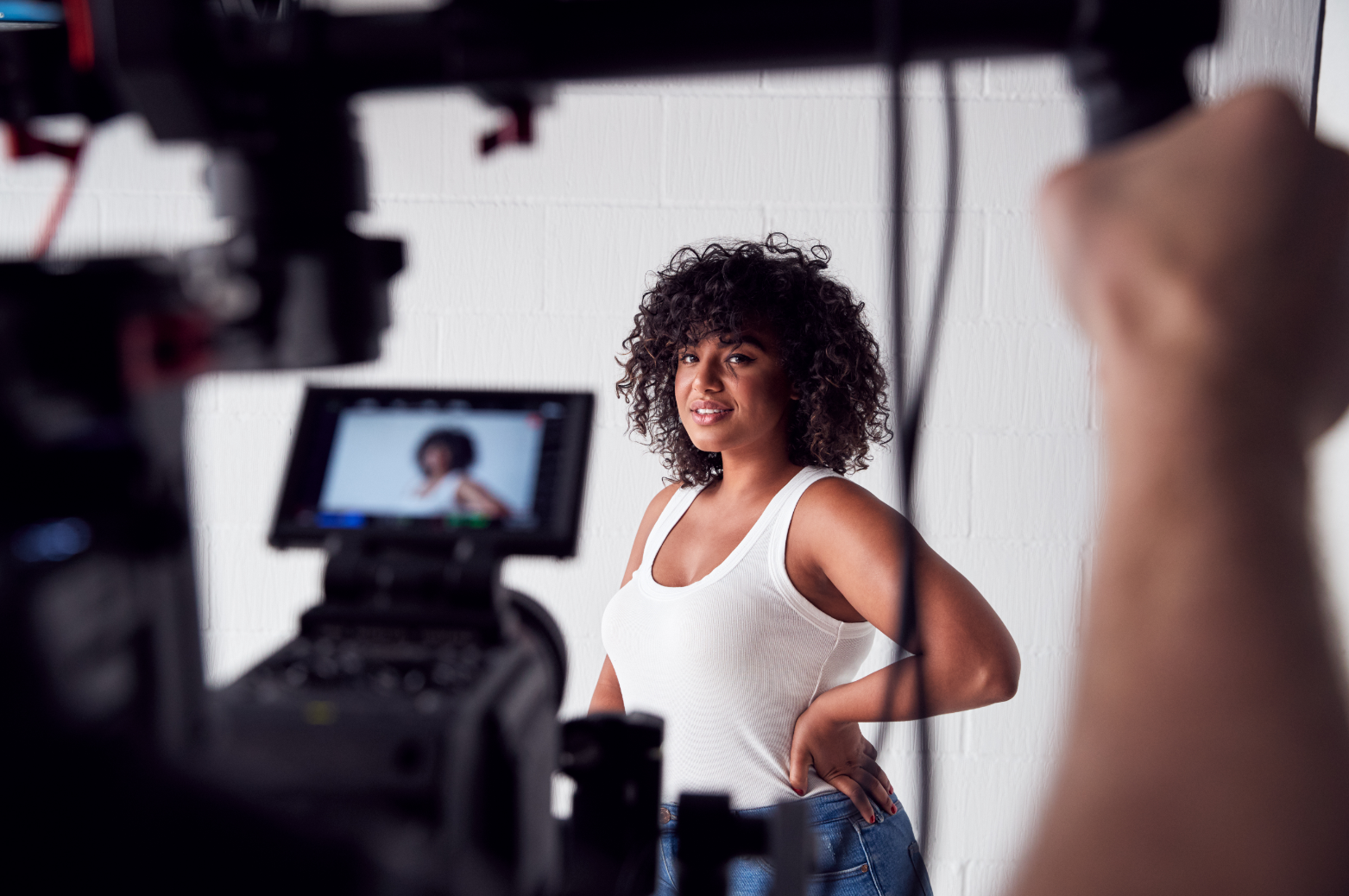What Does a Video Production Company Do? An Overview
.avif)
In today's digital age, video content has become crucial for businesses and brands to communicate their messages effectively to their target audience. According to recent statistics, video marketing will account for over 82% of all internet traffic by 2024. With such a growing demand for video content, it's no surprise that businesses are turning to video production companies to help them create high-quality videos that meet their marketing goals.
But what exactly do video production companies do? How do they help businesses create videos that stand out in a sea of online content? What goes into the making of a video?
In this blog post, we'll explore the in-depth process of how a video production company works.
Let us break down the steps and roles involved.
Stage 1: Pre-Production
The pre-production planning stage is where the initial groundwork is laid for the entire video production process. It involves defining the purpose and goal of the video, identifying the target audience, creating a script or storyboard, video budgeting, and deciding on the video format and style.
At this stage, the roles and responsibilities are:
A Creative Producer in a video production agency is accountable for generating and pitching creative ideas to clients. He/She finalizes the location, props, hires the crew, and makes sure that everything stays within budget.
The Creative Director works with the client to understand their needs and objectives for the project. He/She pitches ideas, drafts storylines, and presents mood boards to convey the look and feel of the video project. They define the creative approach and overall vision for the project, collaborating with the client to ensure their expectations are met.
He works closely with the creative team to develop the script and storyboard, finalizing shots, costumes, and set design to ensure that the final product aligns with the creative vision. They oversee the production design, ensuring that the visual elements of the project are cohesive and on-brand.
The creative team works closely with the Creative Director to ensure that the final product aligns with the client's objectives and expectations.
Once the brief is received from the Creative Director, the creative team starts the research process. They gather references, have discussions, and work on the script. They create a pitch and get it approved by the director and client. They incorporate client feedback and suggestions, ensuring that every detail is addressed.
Stage 2: Production
The creative producer is present on the set and ensures that the project remains within budget, overseeing the logistics of the project, including casting, crew selection, and actor auditions. They play a crucial role in ensuring that the shoot is completed on time, overseeing major expenses such as location, set design, equipment, and the art director's work in setting up the stage.
The Creative Director is present during the shoot to ensure that the creative vision is executed as planned. They work closely with the director, actors, and crew to ensure that the client's message is conveyed effectively through the video.
The Cinematography Team performs the major function on set. The roles and responsibilities include:
Managing the Shoot Schedule :
They ensure that the shoot is completed within the scheduled time and budget. They work with the recce team to decide on the shoot time, refresh time, and timeline, making sure that everything runs smoothly
Set Design and Art:
The art director plays a vital role in setting up the set design, procuring the necessary items, and designing the set. The cinematography team works closely with the art director, ensuring that the visual elements align with the creative vision.
Camera Operation:
The team consists of a Director of Photography (DOP) and camera operators who specialize in different areas. They work together to capture the right angles, lighting, and camera movements to create the desired effect.
Audio Management:
The cinematography team is responsible for managing audio during the shoot. They ensure that live audio is captured correctly, and if needed, arrange for dubbing based on the location and budget.
The cinematography team shares the footage with the editing team, who then work on finalizing the video in the post-production stage
Stage 3: Post Production
Post-production planning is the final stage of film production and involves editing and enhancing the raw footage to create the final product. This stage includes tasks such as selecting the best footage, editing the video, adding special effects, and incorporating sound and music.
At this stage the Creative Producer works closely with the editing team to lead and guide them on how to bring the script to life during post-production. They collaborate with the editing team to ensure that the final product matches the vision of the client, providing creative direction and feedback to achieve the desired results.
The Creative Director also sits with the editing team to ensure that the final product aligns with the client's vision. They show references and explain what the client wants to ensure that the video aligns with the original creative approach.
He/She collaborates with the team to edit the video, providing feedback and guidance to ensure that the final product meets the client's expectations. They are present throughout the entire process, from pre-production to post-production, to ensure that the video is a successful representation of the client's message and brand.
The creative team is responsible for lining up the rushes, and ensuring that the supers (titles and graphics) are correct. They share a mock voiceover with the client for approval and then do the final voiceover. They collaborate with the editing team to ensure that the final product aligns with the original creative vision.
The Editing Team performs the major role in the post-production stage. The roles and responsibilities include:
They work closely with the creative team and director to understand the vision and objectives of the project. They start by reviewing the client assets such as brand brochures, color codes, graphics, and logos to ensure that the video aligns with the brand's aesthetics and requirements. Then, they work on the first cut and seek feedback internally. Once approved, they move on to the editor's cut and director's cut.
After these cuts are finalized, the final internally approved video is sent to the client for feedback. Based on their feedback, the editing team works on the client's cut, and then the final video is delivered.
Software we use: Filmbaker recommends:
For Composing - Adobe Premiere Pro
For Graphics/Motion Graphics - After Effects
For Color Grading - DaVinci
To learn more about what goes into the planning of a Video Production, read our blog.
Feedback and Delivery
Feedback and delivery are crucial post-delivery services provided by a video production company. Once the final video is delivered to the client, they have the opportunity to provide feedback on the video.
The production team then reviews the feedback and incorporates any necessary changes to ensure the client's satisfaction. Once the final revisions are made, the video is delivered in the requested format to the client.
Post-Delivery Services
In addition to the delivery of the final video, many video production companies also provide ongoing support and maintenance services to ensure that the video continues to perform optimally.
This can include troubleshooting technical issues, updating content, and providing analytics and insights to help the client understand how their video is performing. By providing these services, video production companies help ensure that their clients can get the most out of their investment in video content.
Conclusion
Whether it's a commercial, a corporate video, or a short film, video production is a creative and dynamic industry that requires a combination of technical skills and artistic vision to succeed. By working closely with clients, understanding their needs and objectives, and leveraging the latest technology and trends in video production, video production companies can create engaging and effective videos that capture the attention of their target audience and drive results for their clients.
Ready to work with a video production company in Bangalore? Schedule a call with us today and let’s get started.


